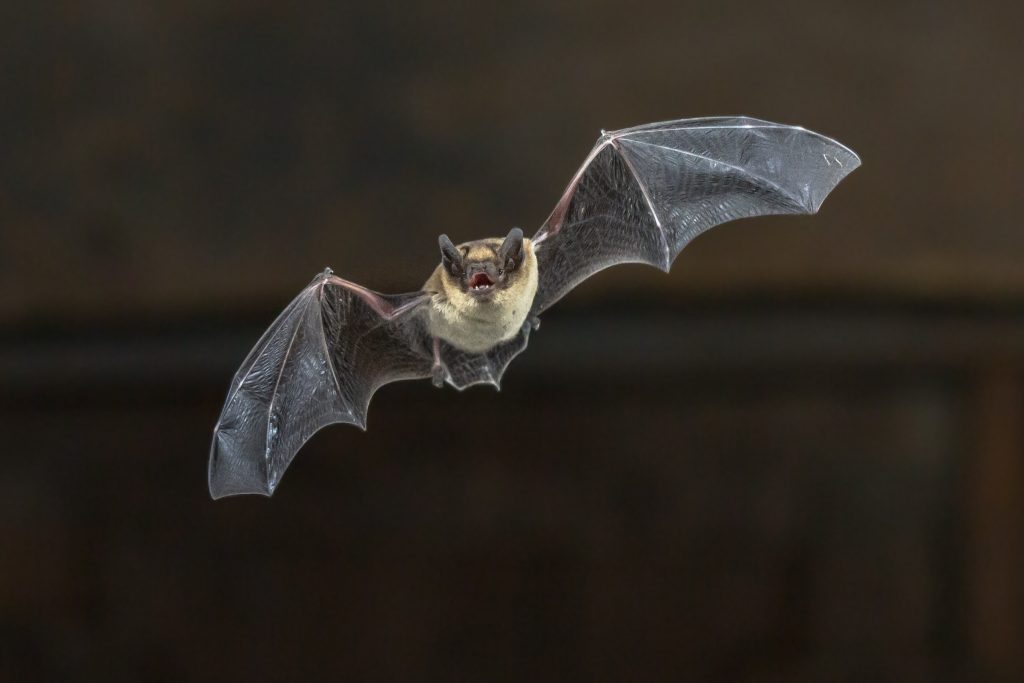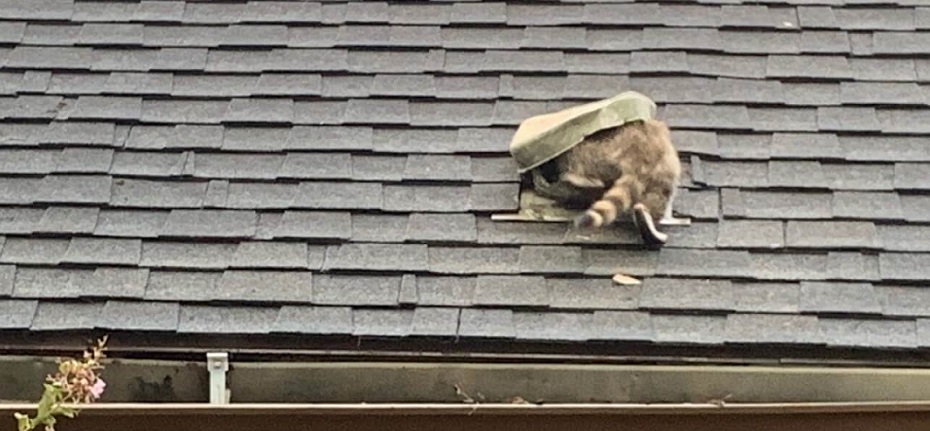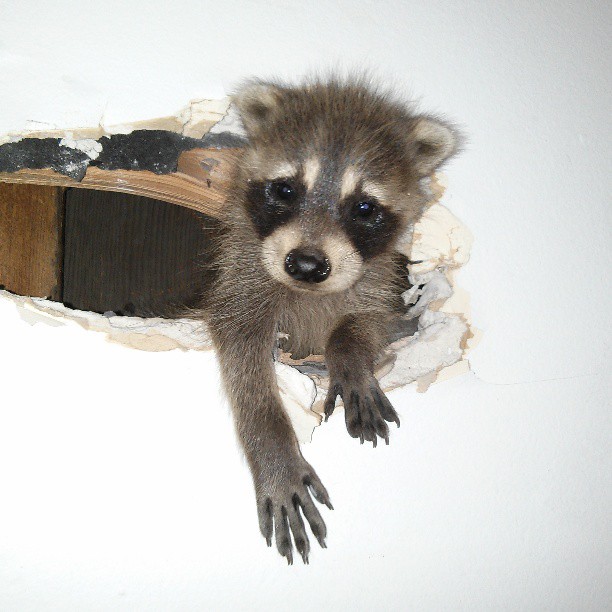Eighteen different species of bats live in Canada. Most live deep in forests, caves, cliff overhangs, and other openings. As residential and commercial properties replace forests, bats must either migrate to a new location or stay and adapt to living among humans.
The bats that stay choose a roosting place near food and water sources. Some bats roost alone, and others in colonies, which may be maternity colonies seeking a space to deliver their pups. They do not need a big opening to enter attics, barns, or sheds.
Bats typically have one or two pups a year. Therefore, ensuring their safety is a must. Currently, most bats are classified as endangered or threatened species, placing numerous restrictions on how homeowners can remove bats from their property.
Bats cannot be disturbed during their maternity season until pups can fly out independently. At that time, deterrents can be put into place.
Why Deter Bats?
Bats do not cause much damage. They don’t chew, gnaw, or destroy parts of your home. The biggest threat bats pose involves their guano or feces, and urine. Bat guano and urine can build up quickly, especially if a colony is roosting in the area. Guano creates a problem when it starts dripping through the attic insulation and flooring to the ceiling and walls of your home.
Guano can deteriorate drywall, stain walls and siding, and carry histoplasmosis spores, a respiratory problem contracted by humans who inhale the spores. Bats carry mites that resemble bed bugs, which will attach to humans if given a chance. In addition, bats have diseases.
It is extremely rare to be bitten by a bat, but if it happens, you risk contracting a disease like rabies. Most states track how many bats have tested positive for rabies in every state.
Most importantly, it is illegal to harm or kill bats. The best way to get rid of bats is to encourage them to evict themselves.
It is recommended you call a wildlife control operator to install deterrents. They know which ones work for the type of bat living in your home.
What Are Deterrents?
While many bat deterrents claim they are the most effective solution, most do not work. Below is a description of repellents:
Toxicants or Pesticides
Currently, no toxicants, pesticides, or other chemicals are registered for use in getting rid of a bat.
Frightening Devices
Frightening devices are those that create sights and sounds to scare away bats. Sprinklers, balloons, laser lights, and pyrotechnics are frightening devices that are not always appropriate. You must consider how they will affect your neighbors.
Odor Repellents
Odor repellents, like ammonia and essential oils, may work, but there is no guarantee. Some bats may tolerate smells better than others. Some bats may stay regardless of the odor, like when they are getting ready to deliver pups. Also, you and your family will be able to smell the odor-repellent if using them in your home.
Bright Lights
Bats do not like bright lights and only want dark spaces to roost. However, shining a bright light on a bat does not always work. It may confuse the bat or cause it to move to a different place in your home. A constant outdoor shining light will attract insects and provide a food source for bats, which could make them want to stay.
You can keep a bright LED light turned on in your attic, but unless it brightens all corners and small areas, it may not work. Plus, your electric bill will increase. Different bats require different amounts of bright lights. The brighter the light, you risk electrical hazards.
Ultrasonic Sounds
Humans cannot usually hear ultrasonic devices, but bats, rodents, and other animals hear a bothersome noise. Bats use echolocation to navigate when they fly. Ultrasonic sounds may interfere with and prevent them from feeding, disrupt sleep, and make communication difficult.
Ultrasonic sound machines do not always work or cause more significant problems. Cheaper models seem to work a lot less than higher-priced ones. They produce weaker sounds, and bats must be close to them to hear them. This may encourage a bat to move out of range.
If you have pets, don’t be surprised if the ultrasonic sounds drive them crazy. Their behaviors in response to the noise can mean bigger problems for you.
Do Bats Return to the Same Place Every Night?
Yes, bats can return to the same place every night. They will also return to a known roost after being gone for months or years. They remember the location, especially if they are looking for a place during the maternity season, and they will return.
While the above deterrents may offer limited success, they are likely only temporary. Once you stop using the devices, bats will return. Exclusions are the most effective way to get rid of bats.
Bat Exclusions
Exclusions are techniques used to prevent wildlife from reentering your home. Rather than try to scare bats away, it is better to prevent a return. Wildlife experts can tell you the exact exclusions that will work for you.
Their goal is to make wildlife view your property as less attractive and will keep moving to find better food, water, and shelter resources.
The time of year matters when excluding bats. Avoid all exclusions between May and August during the maternity season. As all bats begin flying in and out in the fall, install one-way doors. Once bats are out, seal all possible entry points.
At the same time, you must eliminate food and water resources. Outdoor night lights, open trash cans, pet feed, birth baths, bird feeders, and manure piles attract insects, a bat’s favorite food source.
Bat Houses
Having bats in your neighborhood is not always a bad thing. They are essential to our ecosystem since they consume thousands of bugs every night. Giving them a good home keeps them nearby but not inside your home.
Bat boxes are a great solution. Bats won’t leave an attic or barn rafters for a bat box, but you can have this option available after exclusion. Otherwise, bats may repeatedly find a roost only to be forced to move again. Bat houses can be permanent roosting spots.
Several instructions on how to build a bat box exist online, like the one from the National Wildlife Federation. Some key elements to include if you are building a bat house include:
- 2 feet in height
- Landing area
- Mounting on a pole or up high
- Protection from predators and uninvited guests
- Large enough to house a maternity colony
Bat boxes can be created using different materials, including:
- Wood
- Cement Mixes
- Wood Crete
- FSC timber
- Ecostyrocrete
- Metal
- Plastic
If you don’t want to build the box yourself, there are plenty of options for purchase online in all price ranges, from $30 to $130 or more. The larger the box, the more it will cost.
Bats are fascinating wildlife with a purpose. If you have a bat or colony of bats living in your attic or other home structure, call a wildlife control expert to help you decide the best course of action.


